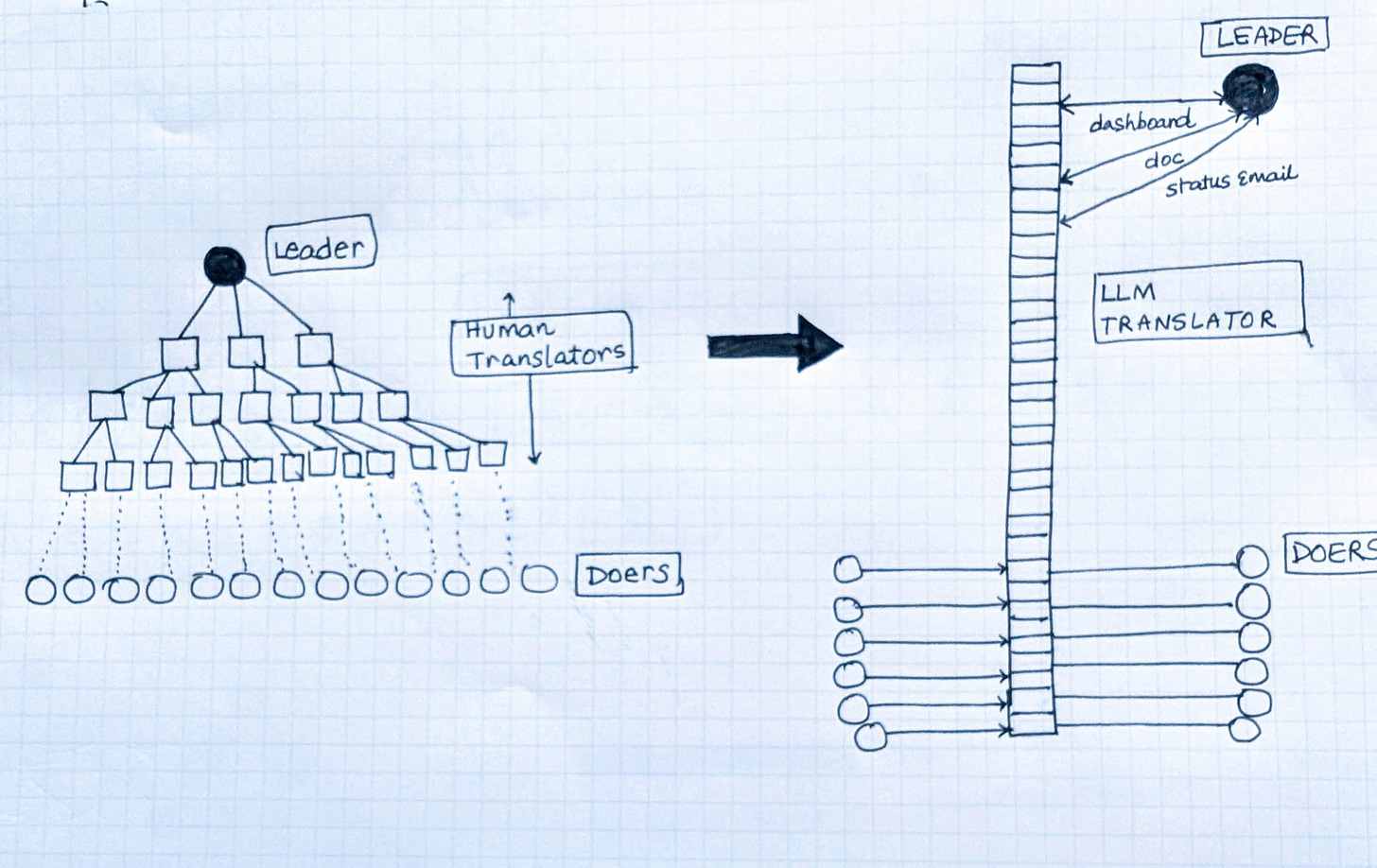No wonder org charts look the way they do. They’re pyramids: leaders at the top, doers at the bottom, and a thick middle band of human translators carrying information up and down.
Enter the Universal Translator
Now something fundamental has shifted with AI: translation has gotten way cheaper, way faster and way better.
Large language models are useful not just tor translating across languages but much more generally, can translate across forms of work.
A 20-page research paper can instantly be translated into a one-page “so what” memo.
A 60-minute call translated into a four-minute decision brief.
A spreadsheet translates into a chart and a headline.
A brainstorm whiteboard picture translates into a roadmap doc.
Requirements translate into a code scaffold with tests.
To me, LLMs have the potential to be the Babel fish of work, the little creature from Hitchhiker’s Guide that instantly translates whatever goes into your ear. Except here, it’s not speech alone. It’s papers into briefs, meetings into memos, data into charts, ideas into roadmaps etc.
For the first time, the unit cost of translation is close to zero. Humans still need to and will provide judgment, taste, and accountability. But the blank-page tax that fills so much of modern work is close to zero.
From Pyramid to Backbone
This shift of instant universal translation at work is going to save time and money. But more importantly, I predict, it is going to fundamentally change the structure of teams and entire organizations.
Org charts have traditionally had to be pyramids because translation was expensive. Thick middle layers of managers, coordinators, and analysts existed to carry that cost. When translation becomes cheap, the middle collapses into AI infrastructure.
What does this future of work look like?
For individuals: Less time producing artifacts, more time reviewing and directing them. Drafting matters less than judging fidelity and making calls.
For teams: Less time patching broken handoffs in meetings, more time moving quickly from messy outputs to usable inputs. Coordination loops shrink.
For organizations: Middle layers compress. Throughput rises, decisions accelerate, and more.

No comments:
Post a Comment